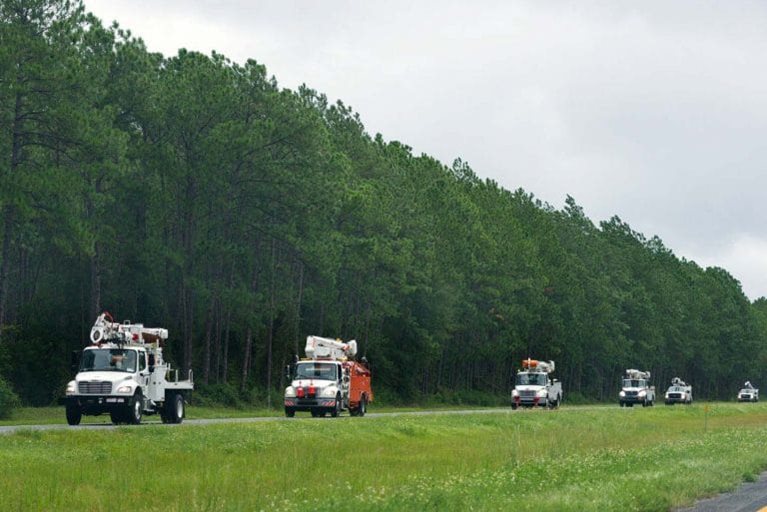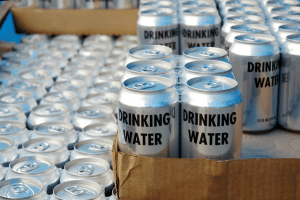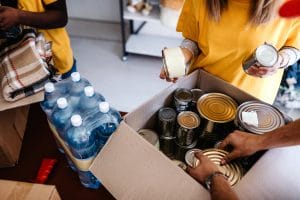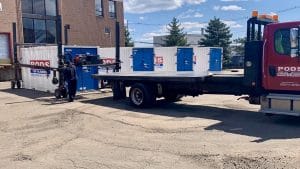
Browse By Topic
How to Protect Lives More Effectively During Disaster Relief
by PODS for Business
Posted on April 20, 2020
Disasters — the devastating tornado, the earthquake, the category 5 hurricane, a pandemic — don't end when the fires go out, the shaking stops, when the storm passes, or when the test results come back. Disaster relief logistical challenges in the aftermath can extend the crisis.
"Large and dynamically changing volumes of critical supplies must be transported in a short time," according to researchers from Rensselaer Polytechnic Institute and the University of Delaware, Newark.
Aid workers may need to bring water, food, temporary shelter, medicine, other supplies, and personal hygiene facilities to an area that might have closed roads, minimal storage, or piles of debris. The more severe the event, the more challenging the response effort.
 Scientists may be able to offer limited advanced notification of a weather event, but an accident like the 2005 train crash in Graniteville, South Carolina that caused the spill of 60 tons of chlorine and resulted in an evacuation of a more than 3-square-mile area can happen any instant.
Good logistics and planning strategies outlined below can reduce risk and a tool that can help is a rapid response unit.
Scientists may be able to offer limited advanced notification of a weather event, but an accident like the 2005 train crash in Graniteville, South Carolina that caused the spill of 60 tons of chlorine and resulted in an evacuation of a more than 3-square-mile area can happen any instant.
Good logistics and planning strategies outlined below can reduce risk and a tool that can help is a rapid response unit.
 Include tables, signage, chairs, and other necessities if the container will be a primary distribution point. Larger containers can also act as central storage to keep distribution locations within an area stocked.
Include tables, signage, chairs, and other necessities if the container will be a primary distribution point. Larger containers can also act as central storage to keep distribution locations within an area stocked.
 Rapid response units simplify and speed disaster relief efforts, and easy setup and breakdown also improve the effectiveness of personnel and reduce risk. With a partnership with PODS for your disaster recovery efforts, your trucks and other vehicles will be free to perform critical response work.
Rapid response units simplify and speed disaster relief efforts, and easy setup and breakdown also improve the effectiveness of personnel and reduce risk. With a partnership with PODS for your disaster recovery efforts, your trucks and other vehicles will be free to perform critical response work.
 Scientists may be able to offer limited advanced notification of a weather event, but an accident like the 2005 train crash in Graniteville, South Carolina that caused the spill of 60 tons of chlorine and resulted in an evacuation of a more than 3-square-mile area can happen any instant.
Good logistics and planning strategies outlined below can reduce risk and a tool that can help is a rapid response unit.
Scientists may be able to offer limited advanced notification of a weather event, but an accident like the 2005 train crash in Graniteville, South Carolina that caused the spill of 60 tons of chlorine and resulted in an evacuation of a more than 3-square-mile area can happen any instant.
Good logistics and planning strategies outlined below can reduce risk and a tool that can help is a rapid response unit.
Disaster Site Response Systems
The fastest response can happen when necessary supplies, tools, and equipment are already provisioned and available for transport. For that to occur, local or state government should take the following steps: 1) Identify areas that could see the largest impact and consider things like:-
- Population density of municipalities and the general area
- Previous weather and climate history including water movement mapping
- Points of potential failure like major ports and transportation hubs
- Traffic capacity, combined with socioeconomic analysis to see how many people could be evacuated and what percentage would likely remain in the area
Packing Tips to Increase Effectiveness
Increase logistics efficiency by planning how to pack disaster relief delivery trucks and their containers for different situations or uses. A container could act as primary or backup storage for food, water, tarps, blankets, and other items for victims as well as first-aid supplies, small generators, tools, and other necessary equipment. Include tables, signage, chairs, and other necessities if the container will be a primary distribution point. Larger containers can also act as central storage to keep distribution locations within an area stocked.
Include tables, signage, chairs, and other necessities if the container will be a primary distribution point. Larger containers can also act as central storage to keep distribution locations within an area stocked.
- Place items on rolling carts to more quickly bring goods out.
- Arrange carts next to one another in layers, with rows of carts side-by-side.
- Stand sheets of plywood in front of each row to keep cart contents from shifting.
- Tie cords or ropes ties to hooks on the container walls to secure everything.
- Place tarps on container floors to reduce cleaning needs.
- Place the ramp materials on last, then close and lock the container door.
- If flooding is a danger, choose locations where the containers will remain above the water.
Transportation for Disaster Relief
PODS disaster response solutions can keep containers with always-ready for response units in one of our secure PODS Storage Center for delivery when needed, using our PODZILLA patented level lifting system for keep container contents from shifting inside when loading and unloading. When there is time to plan, containers can be delivered and then transported to where needed. Rapid response units simplify and speed disaster relief efforts, and easy setup and breakdown also improve the effectiveness of personnel and reduce risk. With a partnership with PODS for your disaster recovery efforts, your trucks and other vehicles will be free to perform critical response work.
Rapid response units simplify and speed disaster relief efforts, and easy setup and breakdown also improve the effectiveness of personnel and reduce risk. With a partnership with PODS for your disaster recovery efforts, your trucks and other vehicles will be free to perform critical response work.
[maxbutton id="3"]
Comments
Leave a Comment
Your email address will not be published. Required fields are marked *
